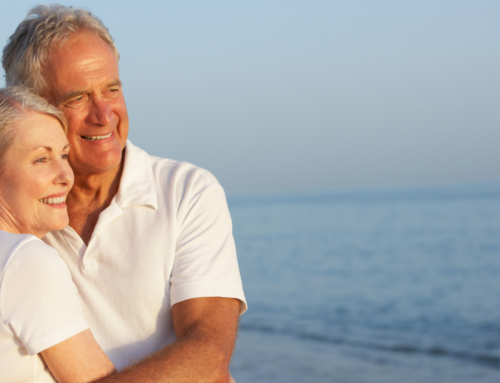When the days get shorter and the temperature turns cooler, most people put on a sweater and add another log on the fire. Others, however, find it difficult to even get out of bed. This winter depression is widespread and it can often be debilitating.
 Mental health practitioners have a medical term for this type of depression which is related to the change in the season. It is called Seasonal Affective Disorder (SAD) and, according to the Mayo Clinic, an estimated 5 percent of the population experience symptoms such as:
Mental health practitioners have a medical term for this type of depression which is related to the change in the season. It is called Seasonal Affective Disorder (SAD) and, according to the Mayo Clinic, an estimated 5 percent of the population experience symptoms such as:
- Irritability
- Tiredness or low energy
- Problems getting along with other people
- Hypersensitivity to rejection
- Heavy, "leaden" feeling in the arms or legs
- Oversleeping
- Appetite changes, especially a craving for foods high in carbohydrates
- Weight gain
American Family Physician notes that women are more likely to experience SAD than men. When this condition is combined with winter holidays such as Christmas, Hanukkah and New Year’s Day – celebrations that can bring on even more stress – it can become overwhelming to the person experiencing it.
“SAD is a very real condition,” noted nurse practitioner and founder of Evexias Medical Centers, Terri DeNeui. “This condition is often called ‘psychosomatic’ which, in fact, it is. That term is often misused to suggest something is not a serious medical condition. The term ‘psychosomatic’ simply means the interaction of the mind and body, and SAD is exactly that.
“The most compelling evidence for SAD being a legitimate medical condition comes from the fact that medical providers now have a specific insurance code which they use in tracking and treating this. It is recognized as a variation of depression.”
What Causes SAD?
While there are several theories about the causation of SAD, most mental health researchers and practitioners feel that sunlight – or the lack thereof – is the primary trigger for this condition. Terri explains.
“In the absence of sunlight, a person’s melatonin level is reduced,” she noted. “Melatonin is a hormone which regulates sleep and energy levels. As the sunlight fades in the evening, our energy level goes down and we get sleepy. This same effect occurs on overcast or rainy days. We feel very melancholy and have less energy.
“Recent research suggests that those who suffer from SAD require 24 times more sunlight than an average person to overcome their lack of melatonin. There is another theory that suggests when there is a lack of sunlight, it is more difficult for the body to produce serotonin, the hormone that stimulates more uplifting, happy emotions. Clearly, these two theories are interrelated.”
“This SAD condition is particularly prevalent in areas where there is considerable rain, such as Washington, or where it is dark for long periods of time, as it is in Alaska.
(Un) Happy Holidays
As noted earlier, the holiday season can be a “double whammy” for someone who is suffering from SAD, as the condition can be exacerbated during this time.
“Many, otherwise happy people, experience sadness around the holidays,” Terri noted. “Perhaps this is the result of a lost loved one, or some disappointment related to the year which is coming to a close. There are multiple reasons why people feel melancholy around the holidays.
“The stress of the holidays combined with a lack of sunlight can result in a ‘perfect storm’ for someone with SAD. Sadly, this is part of the reason suicide rates are higher around the winter holidays.”
Hormone Imbalance and SAD
Low testosterone and estrogen can have an impact on the severity of SAD. Terri explains.
“When these two hormones are low – among both men and women – or if they are dramatically fluctuating among perimenopausal women, it adds another ‘layer’ of misery on top of the lack of sunlight. In our practice, we have found that regulating the hormone balance can play an important role in reducing the severity of SAD, especially around the holidays.
“We also recommend that patients increase their intake of Vitamin D during this winter season to at least 10,000 IU’s a day.” Terri said. “As we have noted in a previous post a primary source of Vitamin D sunlight of which, there is a dearth during the winter. This vitamin acts as a type of ‘happy’ hormone in the body by increasing our sense of well-being. Plus, it plays a powerful role in helping us fight off winter colds and flu.
A Prescription for Dealing with SAD during the Holidays
“The best therapy for anyone who has, or suspects they have, SAD is to expose themselves to as much light – whether it is sunlight or artificial light – as possible,” Terri noted. “One of the treatments for SAD is photo-therapy and many psychologists prescribe these special lights for those who have this condition.
“If one’s lifestyle allows, it is also advisable to travel to areas which have a lot of sunlight during the winter. This is a good excuse for a winter vacation to places like Texas or Florida,” she smiled.
The winter holidays can bring on a mild or serious depression. If you are feeling an unusual sadness, see your physician or mental health professional. Evexias Medical Centers are also here to help. Contact us for an appointment.






